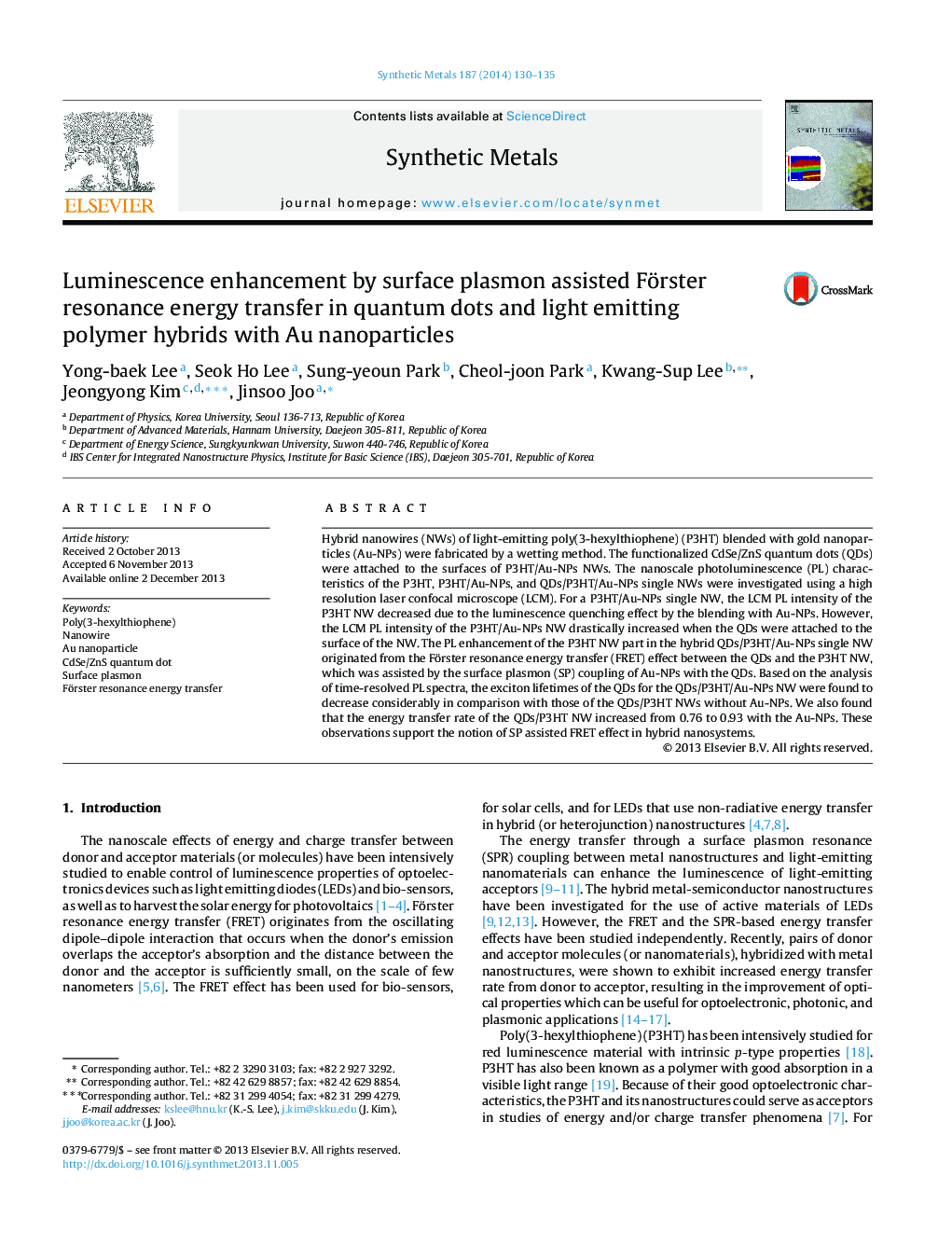| Article ID | Journal | Published Year | Pages | File Type |
|---|---|---|---|---|
| 1441140 | Synthetic Metals | 2014 | 6 Pages |
•CdSe/ZnS QDs were hybridized with P3HT/Au-NPs NWs.•PL intensity of the P3HT/Au-NPs NW increased when the QDs were attached.•The PL enhancement originated from the surface plasmon assisted FRET effect.
Hybrid nanowires (NWs) of light-emitting poly(3-hexylthiophene) (P3HT) blended with gold nanoparticles (Au-NPs) were fabricated by a wetting method. The functionalized CdSe/ZnS quantum dots (QDs) were attached to the surfaces of P3HT/Au-NPs NWs. The nanoscale photoluminescence (PL) characteristics of the P3HT, P3HT/Au-NPs, and QDs/P3HT/Au-NPs single NWs were investigated using a high resolution laser confocal microscope (LCM). For a P3HT/Au-NPs single NW, the LCM PL intensity of the P3HT NW decreased due to the luminescence quenching effect by the blending with Au-NPs. However, the LCM PL intensity of the P3HT/Au-NPs NW drastically increased when the QDs were attached to the surface of the NW. The PL enhancement of the P3HT NW part in the hybrid QDs/P3HT/Au-NPs single NW originated from the Förster resonance energy transfer (FRET) effect between the QDs and the P3HT NW, which was assisted by the surface plasmon (SP) coupling of Au-NPs with the QDs. Based on the analysis of time-resolved PL spectra, the exciton lifetimes of the QDs for the QDs/P3HT/Au-NPs NW were found to decrease considerably in comparison with those of the QDs/P3HT NWs without Au-NPs. We also found that the energy transfer rate of the QDs/P3HT NW increased from 0.76 to 0.93 with the Au-NPs. These observations support the notion of SP assisted FRET effect in hybrid nanosystems.
Graphical abstractFigure optionsDownload full-size imageDownload as PowerPoint slide
